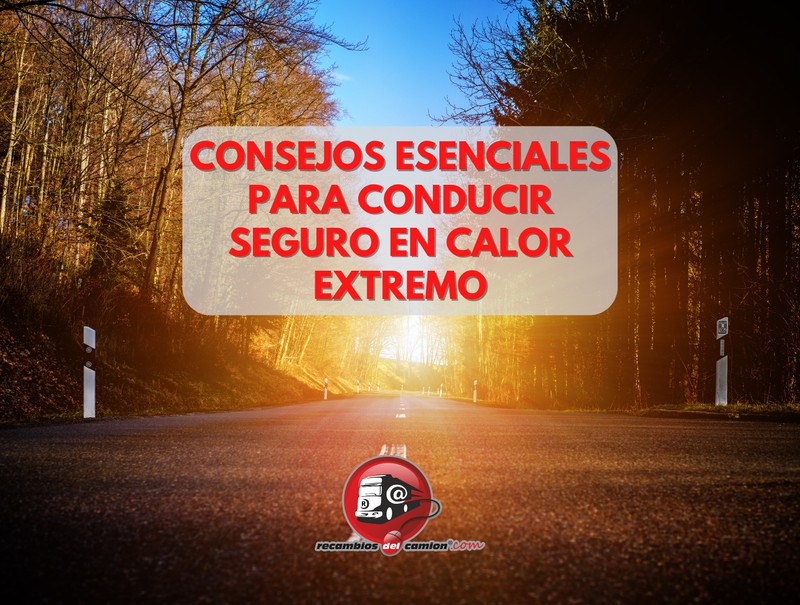Essential tips for safe driving in extreme heat
In August, with extreme heat, Northgate details a series of actions aimed at both private and professional drivers to make their journeys safer and avoid unexpected incidents at the wheel. We are in the middle of summer and with thermometers reaching 40 degrees. These are the dates when long-distance journeys by car increase due to summer holidays or to make short getaways near the place where one lives. Professionals who use the vehicle for their work also have to deal with high temperatures when they get behind the wheel at this time. The intense heat affects the driver and, by default, driving.
Every summer, the DGT reminds us that driving in excessive heat inside the vehicle can increase the risk of having an accident by up to 20%. The heat can cause fatigue and drowsiness, it reduces reflexes and concentration on the road, so that the response capacity is delayed and more errors can be made at the wheel. High temperatures cause drivers to become more irritable and nervous. But it doesn't just affect the driver, it also affects the passengers and the vehicle itself, which can suffer consequences during the journey.
To ensure that journeys are carried out without unforeseen events and with the greatest safety, Northgate Renting Flexible, a leading company in flexible vehicle rental in our country, reminds us that we must not let our guard down in the face of the heat and advises carrying out these useful actions when driving during these stifling days.

Prepare and check your car
High temperatures affect your vehicle's performance. It's a good idea to make sure that your fluid levels, tyre pressure and other parts, such as filters or battery, are adequate before you hit the road.
Check your air conditioning system
It's recommended that the interior of your vehicle be between 22 and 24 degrees. To achieve this temperature in August, it's essential that your air conditioning or climate control works properly. So, before you set off, check and verify. An interesting fact to bear in mind when driving is that if you have the air on below 20 degrees, fuel consumption will increase.
Comfortable, loose clothing
If you're going to be behind the wheel for a long time, it's a good idea for the driver to be as comfortable as possible with clothing that doesn't hinder their movements. It is best to wear cool, breathable clothing. It is also important to wear suitable footwear that is flexible and supports the foot well.
Hydration and moderate meals
Drinking water frequently and without waiting to be thirsty is the best and healthiest option when driving in very hot weather. Avoid heavy meals just before getting in the car or during the journey. The best thing to do is to eat light, fresh dishes, avoiding fats and, of course, no alcoholic drinks.
Rest
It is advisable to stop the car every two hours or every 200 km of driving and rest for a few minutes, preferably parking the car in shaded areas. However, if at any time during the driving process the driver feels tired, it is better to stop immediately to rest.
These practical tips apply both to private drivers who are going to start their holidays at this time or who are returning from them, as well as to all those professionals who face extreme temperatures during their working days. For all of them, it is also recommended to protect the skin and eyes with sunscreen and sunglasses.
Extreme heat not only affects the driver and passengers, but also the vehicle itself. High temperatures can cause engine overheating, battery failure and accelerated tire wear. Therefore, it is essential to carry out preventative maintenance before embarking on any long trip during the summer.
Cooling System Maintenance
The car's cooling system plays a crucial role in preventing the engine from overheating. Check the coolant level and make sure there are no leaks. It is advisable to perform a complete check of the cooling system, including the radiator, hoses and fan, to ensure that it is working properly.
Battery Care
High temperatures can reduce the life of your car battery. Before a long trip, it is advisable to check the condition of the battery and clean it of any corrosion. If your battery is more than three years old, consider replacing it to avoid being stranded in the middle of a trip.
Tire Pressure and Condition
Heat can increase tire pressure, which could lead to a blowout. It's critical to check tire pressure before every trip and adjust it to the manufacturer's recommendations. Also, check for cuts, uneven wear or bulges that could compromise the safety of your vehicle.
Staying hydrated is vital when driving in extreme heat. Dehydration can negatively affect concentration and reflexes. Here are some tips to keep well hydrated while travelling:
Water and sports drinks
Carry enough water for the entire trip and make regular stops to drink. Sports drinks can be useful for replenishing electrolytes, especially on long trips.
Avoid caffeine and alcohol
Caffeine and alcohol can dehydrate you, so it's best to avoid them before and during the trip. Opt for water, cold infusions or natural juices.
Driving in extreme heat requires extra precautions to ensure the safety and well-being of all vehicle occupants. Properly preparing your car, staying hydrated, wearing comfortable clothing, and planning your trip well are essential actions to minimize the risks associated with heat.
Safety behind the wheel is a priority, and following these tips can make the difference between a safe and comfortable trip and one full of surprises. Whether you're enjoying your vacation or working under the scorching sun, taking these precautions will help you get to your destination safely and without incident.





Receive our news